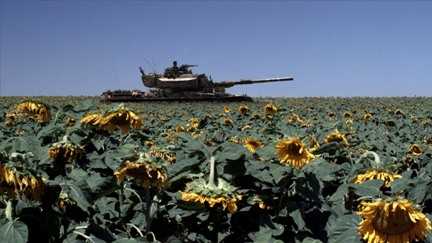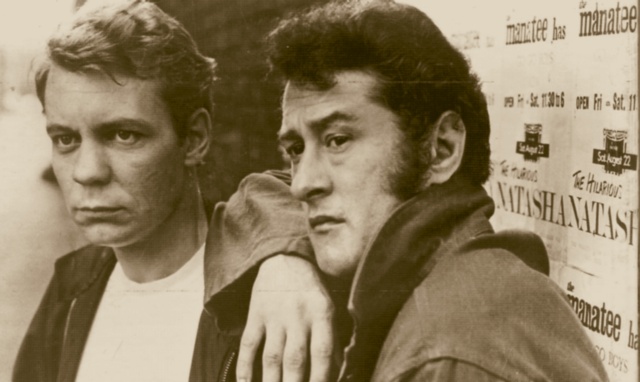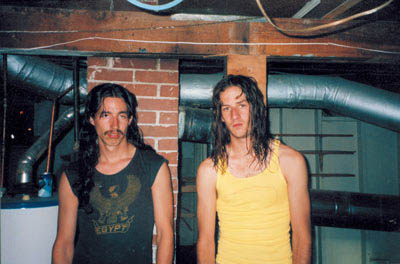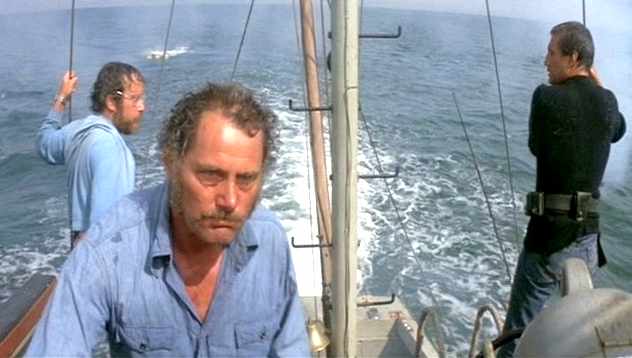Ajami (Scandar Copti & Yaron Shani, 2009)
*** (A Must-See)
 Lebanon
Lebanon (Samuel Maoz, 2009)
* (Has redeeming facets)
 As-Salāmu `Alaykum
As-Salāmu `Alaykum, Scandar Copti and Yaron Shani’s Arab-Israeli crime thriller
Ajami (2009), named after the neighborhood in the Jaffa district in Tel Aviv, is an intertwined tale of Arab adolescents and young adults who deal with the dissent neighborhood crimes and tensions. The characters are various. Omar (Shahir Kabaha) is coping with a fatal family rivalry. Malik (Ibrahim Frege) is an illegal immigrant working at a friend’s restaurant. Binj (Copti) wants to peddle a bulk of cocaine. A policeman, Dando (Eran Naim), suspects his brother to be dead. Nasri (Fouad Habash), Omar’s younger brother, is a seer cartoonist that draws out everyone’s fate.
Ajami is tactful and inquisitive as it’s five divisive chapters provide varying perspective on the event of a drug deal gone awry with a shooting. Though there are intertextual allusions to American action films, the multiple perspectives reiterates the complexities of the issues at hand and reminds the viewer that whether in film or in a news article, things are a lot more multifaceted then it would appear at first glance.
Ajami also provides an interesting perspective on the Israeli society as it portrays the Arab population to be divided between Muslim- and Christian-Arabs as well as Israeli and non-Israeli Arabs.
Ajami really makes one identify with the Arab population as human beings and provides a portrait that is uncharacteristic of recent media portrayal. The characters experiences are complex, as they have to deal with life impending threats, dangerous family history, perpetual cyclical feuds, social inequalities, class differences, anxieties of blooming romances, untenable medicine bills, risks of illegal immigration and tainted drugs. The film excels at portraying a window of the Arabic and Hebrew speaking Jaffa neighborhood residents. It does so in showing the dress of these men (i.e. desert-wear and sport shirts) and the behaviors and sights, like guys sitting around smoking hookah surrounded by wandering sheep and geese. All the while the story has a strong humanist belief of care and appreciation between family and friends as the emotional center lies in the personal warmth and support between people.
Ajami won the Wolgin Prize for best feature film at the 2009 Jerusalem Film Festival and won the Caméra d'Or Special Mention at the 2009 Cannes Film Festival.
*****While Samuel Maoz’s
Lebanon (2009), which won the Golden Lion at the Venice Film Festival, tells the story of Israel Defense Force soldiers in a tank at the start of the 1982 Lebanon War. The young soldiers include a driver, the turret loader, the gunner and the commander. Without portraying any context
Lebanon unapologetically drifts in the obscurity and obscenity of warfare without providing any redeeming values for anyone. It feels like a film made by someone who lived through the trauma, an emphasis on the shooters eye looking at atrocities through his crosshair, and whose posttraumatic stress pushes any trace of humanity out of the movies existence.
It’s daring aesthetic quality is that the story is told from inside of the sweaty and oily tank, without leaving the claustrophobic confines except for the films introduction and bookend conclusion in the same striking decaying sunflower field. Objects are used as visual stand-ins as a crying halved horse or hanging meat to represent the sadness and casualties of the warfare. In a destroyed travel agency pictures of a Paris, London, and the New York City skyline, with the twin towers in full bloom, represent the international community.
Lebanon works as a form of history revisionism as it is not heroic or nationalist as it posits that war is hell, especially for these twenty-something-year-old soldiers.
At the core of
Lebanon is an emotional maladaptation, which one hopes can be attributed to Samuel Maoz direction and not to a social malaise associated with mandatory three-year regular service in the IDF. This emotional maladaptation is overriding in every moment and results in the films series of conflict. Even before combat starts there is petty feud within the tank over who should stand on guard. While later on expressed in a monologue one of the soldiers describe finding out about his fathers death by his grade eleven female teacher and recalls how he got a hard-on from being hug by her and that he uses the hug opportunity to eventually ejaculate. These soldiers manifest the cold recurring motto stamped in Hebrew on the tank “Humans are made of steel, Tanks are made of trash.”
These piss-poor recollections of wartime combat shroud any sign of benevolence out of the Lebanon War as well any possible humanitarian future efforts. Even the Christian Phalangist militia, who is assumed to want to help a detained Syrian war prisoner, utters him death threats. International law is dismissed, as “phosphorous” gas is renamed “flaming smoke.” All of this is made even sicklier with the miserable twist ending as the soldier, who sent home a message that he was ok, dies as they are informed his parents received it. These obscenities stick out in contrast to
Ajami as that film was interested in sympathizing with the Arab plight while
Lebanon is more interested in using them as crosshair targets.
These two films are a cultural production of an Israeli social consciousness similar to how South Korean director Bong Joon-Ho’s
Mother (2009) presents a cultural product of a Korean reality. Though
Mother is not necessarily about the North and South Korea rivalry. In the wake of the North Korea attack on a South Korea Warship in March killing 42 people.
Mother, other then being a gripping thriller of a mother trying to take care of her mentally delayed grown-child, posits a reversal of expectations where the layman son turns out to be more rational then the delusional and violent mother authority figure.
The national cinema of Israel has gone a long way since Yom Ha'atzmaut, the inauguration of the Jewish State, in May 14th 1948. What
Lebanon and
Ajami, and other recent Israeli films like
Waltz with Bashir (2008),
Beaufort (2007),
The Band’s Visit (2007), or
The Lemon Tree (2008) demonstrate is that the country has developed a sustainable feature-film production infrastructure. These films win prizes at prestigious film festivals circuits and get mainstream Academy Awards nominations. With a topical spirit in content, a palimpsest of historical influences, and working on a collective Israeli memory contribute to create these individual works that provide a different position on a country that is being internationally negatively portrayed right now by the Prime Minister of Israel Benjamin Netanyahu’s high-handed policies through the mishandling of the Gaza Strip and prevention of resources of the Free Gaza Movement flotilla ships. These films, many of which are playing at the Library and Achieves Canada as part of the Israeli Film Festival organized by the CFI, broach some of the countries contemporary issues, convey a divergent narratives and if they are done right can increase the knowledge one has about Israel and can be a catalyst for more peaceful relations.-
David Davidson(Quartier Latin, 350 Rue Emery, Montreal, QC) &
(Canadian Film Institute, Library and Archives Canada, 395 Wellington Street, 13/06)










